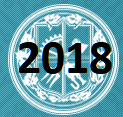SECURITY MEASURES IN IOT SYSTEMS
Keywords:
dynamic testing, data encryption, multifactor authentication, Internet of thingsAbstract
Relevance of research topic. Recently, more and more systems of the Internet are integrated into the environment of our everyday life, which involves the exchange of data through the devices of these systems. With the increase in the amount of data transmitted and processed in such a system raises the issue of security access to them. The purpose of this study is to present a set of Internet safety principles (IoT), rules for developing Internet things to achieve a high level of security and best practices for such developments that can be used as the basis for future standards and certificates. Most of these rules can be applied to any device with an Internet connection; However, this article focuses on security and privacy practices for IT.
Formulation of the problem. Some manufacturers produce and sell IoT devices that do not have a sufficient set of security features. This leads to serious damage, both economic and moral, to specific individuals and organizations that use the IoT system. The latest example is video recorders and IP cameras now mentioned by XiongMai Technologies. Because IoT devices are becoming popular, if you do not take certain measures to protect these devices, the scale of the damage done in the future may be even greater.
Analysis of recent research and publications. The rapid development and spread of IoT technologies and systems developed on their basis has raised many questions about the security of the functioning of such systems. In this regard, organizations that develop world-class standards for the quality of software and hardware, such as IEEE, have been conducting a lot of research in this area and publishing them.
Selection of unexplored parts of the general problem. This article provides general principles for the design and development of IoT systems and devices with a high level of security and security of data exchange that occurs in such systems.
Setting objectives. At the moment, since various precautionary measures are due to the specifics of the scope and are defined in different conditions in different ways, it is impossible to define a set of universal rules for the security of the IoT. However, it is important to describe a set of general principles and best practices for security and privacy measures in the development and integration of IoT systems.
Presentation of the main material. Within the framework of this article a set of recommendations for ensuring a high level of safety of IoT systems grouped by appointment is proposed.
Conclusions. In this paper, a set of general principles on which modern IoT devices and systems should be built are considered.. Following these recommendations, developers and vendors of IoT products minimize both the economic and reputational risks associated with the safety of their products.
References
Stankovic J. A. Research Directions for the Internet of Things [Електронний ресурс] / IEEE INTERNET OF THINGS JOURNAL. – 2014. – №1. – С.1–7. – Режим доступу до журн. : https://ru.scribd.com/document/354442742/IEEE-Research-Directions-for-the-Internet-of-Things.
Hua-Dong Ma. Internet of Things: Objectives and Scientific Challenges [Електронний ресурс] / Journal of Computer Science and Technology. – 2011. – №26. – С.919–920. – Режим доступу до журн. : https://link.springer.com/article/10.1007%2Fs11390-011-1189-5.
Baker F. Broadband Internet Technical Advisory Group. [Електронний ресурс] : Internet of Things (IoT) Security and Privacy Recommendations. – 2016. – №1. – С.17–41. – Режим доступу до журн. : https://www.bitag.org/documents/BITAG_Report_-_Internet_of_Things_(IoT)_Security_and_Privacy_Recommendations.pdf.




